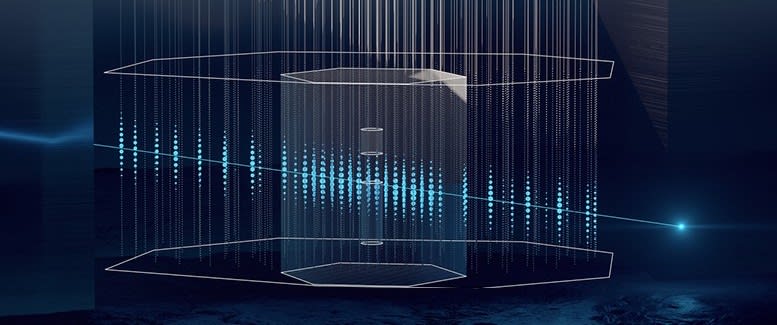
A facility where the frontiers of neutrino astrophysics and particle physics meet
IceCube-Gen2, the planned IceCube Neutrino Observatory extension, builds on the exceptional properties of the Antarctic ice sheet and the expertise of the international team that constructed and operates the first gigaton neutrino detector to explore uncharted regions of the extreme universe and test the limits of particle physics.

the IceCube-Gen2 facility at a glance
#1
WORLD’S LARGEST NEUTRINO DETECTOR
18 K
OPTICAL AND RADIO SENSORS
8 KM3
INSTRUMENTED ANTARCTIC ICE
1 M
NEUTRINOS DETECTED EVERY YEAR
1012
ENERGY RANGE FROM SUPERNOVAE TO COSMOGENIC NEUTRINOS
7
DETECTOR ARRAYS, INCLUDING 4 IN-ICE, 2 SURFACE AND 1 RADIO ARRAY
400
SCIENTISTS FROM 64 INSTITUTIONS
16
COUNTRIES IN NORTH AMERICA, EUROPE, ASIA & AUSTRALIA

THE NEXT-GENERATION ICECUBE NEUTRINO OBSERVATORY
FROM HIGH-ENERGY PRECISION NEUTRINO PHYSICS TO ULTRA-HIGH-ENERGY NEUTRINO AND COSMIC-RAY ASTROPHYSICS
IceCube-Gen2 encompasses three detector arrays: the huge optical array will increase the detection capabilities for astrophysical high-energy neutrinos; the surface array will enable improved cosmic-ray science as well as gamma-ray measurements; and the radio array will detect neutrinos up to the EeV scale.

INTERNATIONAL AND MULTIDISCIPLINARY SCIENCE AT THE SOUTH POLE

Neutrino and multimessenger Astrophysics
The improved capabilities of IceCube-Gen2 will allow us to resolve the high-energy neutrino sky from TeV to EeV energies and will reveal the sources and propagation of the highest energy particles in the universe.

neutrino Physics
With more than one million neutrinos detected every year, IceCube-Gen2 will be a flagship neutrino physics experiment. Surveying the high-energy frontier will be crucial to exploring beyond-the-standard model features in neutrino physics and may become a discovery machine for heavy dark matter particles.

Earth Sciences
The optical and radio properties of the Antarctic ice in and around the IceCube-Gen2 instrumented volume will be thoroughly studied to calibrate the different detector arrays. This will become a unique opportunity to deepen our understanding Earth’s climate history.

MEET OUR COLLABORATORS
The international IceCube-Gen2 Collaboration brings together more than 400 scientists from 16 countries. It was born from and expands on the experience and expertise of the team that built IceCube, the first cubic-kilometer-scale neutrino detector.

